The Mushroom Guide Part 9: working with agar cultures
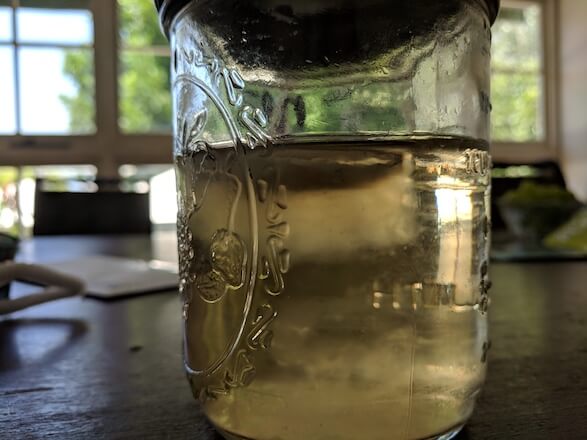
A jellylike substance derived from seaweed, Benedict Noel sets out the role of agar cultures in Part 9 of his Mushroom Guide.
You can find Parts 1, 2, 3, 4, 5, 6, 7 and 8 ready to read first.
What you need:
- A pressure cooker that can reach 15 PSI
- Agar agar
- Some nutrients for the agar
- A jar/plastic takeaway container or petri dishes
- A scalpel or dentist pick
Agar is a jellylike substance that’s derived from seaweed. The Malay word for jelly is agar-agar, so you’ll see it called agar or agar-agar. You can either buy powdered agar by itself or with added nutrients and potentially antibiotics. If you’re just starting out, the cheapest place to buy agar is from your local Chinese supermarket or you can buy a little packet for a few dollars from eBay. If you buy it from someone who sells mushroom supplies, you’re likely to buy it premixed with some nutrients MEA (Malt-extract agar) or PDA (potato-extract agar). If you want to make your own, it’s easy enough to buy malt extract separately and mix it with agar. Places like Fungi Perfecti sell premixed agar with antibiotics. Antibiotics are useful because they will limit the number of bacterial contaminations you get. This type of agar is easy to use, but will cost more than if you make it yourself. If you don’t want to use antibiotics but want to limit the number of bacterial issues you get, you can mix in a small amount of hydrogen peroxide (bought from your local chemist) when your agar cools below 50C.
Containers
You can use agar in all kinds of containers as long as it’s seal-able and is either sterile, or able to withstand the temperatures of a pressure cooker. The most common vessels are petri dishes, but if you’re going low tech you can re-use little plastic takeaway containers (made of polypropylene) or small glass jars. If you’re looking to store mushrooms longer term, you can create slants in test tubes.
Mixing and sterilising
To add the agar mixture to your container, you’ll need to mix some boiling water with agar powder. The ratio of agar to water you use will determine its consistency. Paul Stamets recommends using 25g of agar per 500ml of water (about 5%), but you can get away with less.
In general, I’ll make my agar in a single vessel and then pour it into petri dishes after pressure cooking it. If you’re using jars, you can mix the agar and then pour it into the jars before putting it in the pressure cooker. The cheapest vessel to use for your agar is an old beer bottle. Mix the agar and hot water, pour it into the beer bottle with a funnel and then cover the top of the bottle with some aluminium foil and pressure cook it for 15-20 minutes at 15 PSI. If you’re pouring into petri dishes, the easiest vessel to pour from is a polypropylene jug. You fill the jug with your agar mix, cover it with aluminium foil and then pressure cook it. If you’re using a metal scalpel to do your culture transfers, it’s a good idea to wrap it in alfoil and put it in the pressure cooker along with the jug to sterilise it.
Pouring
After your agar is pressure cooked, you’ll need to pour it while it’s still hot, otherwise it will set in your jug. However, if you try and pour it while it’s too hot you’re more likely to burn yourself, and you petri dishes will get a lot more condensation on them. I usually wait an hour after I turn the heat off my pressure cooker before opening it up and pouring the agar into plates.
If you’re pouring petri dishes, you’ll need to do this in an aseptic (sterile) environment. This means using a still air box, or glove box if you’re just starting out. If you get into the hobby a bit more seriously, buying or constructing a flow hood to work in front of makes life much easier.
Inoculating
You’ll need to inoculate your agar in a sterile environment (still air box/flow hood). The exception to this is if you’re transferring from liquid culture into jars with airport lids, as the agar won’t be exposed to the air at all.
From liquid culture
To transfer liquid culture to agar, you’ll be using a syringe. You’ll liquid culture will either already be in a syringe, or it will be in a jar that you’ll first need to pull into a syringe. Either way, you’ll need to agitate your liquid culture to break it up, so that each drop of liquid contains a little mycelium. From the syringe, squirt a few drops of the liquid culture onto the agar, you don’t need very much. If your agar culture has airport lids, you can do this in a non-sterile environment.
From agar
Ensure you have a sterile syringe or a dental pick. Cut a small wedge of the colonised agar and quickly transfer it to fresh agar and then seal up the container. If you’re using petri dishes, it’s a good idea to either put them in zip lock bags or to wrap parafilm around them to stop them from drying out and being exposed to contaminants.
From a mushroom
Creating an agar culture by cloning a fresh mushroom is fairly straightforward, and it is easier if the mushroom that you’re cloning is big. Dip your mushroom into a weak H202 (hydrogen peroxide) solution for a few seconds, or spray it liberally with a water/methylated spirits mixture. With gloves on, split the mushroom in half using your hands to expose tissue at centre of the mushroom. Cut a very small part of this tissue out from this central area using your scalpel or a dental pick and transfer it to your agar. You want to get a bit of tissue that has not been exposed to air, as this will significantly reduce the chance of transferring contaminants across. A few days after transfer, you should see visible signs of growth.
From spores
When transferring spores to agar, you will need to use an inoculation loop. You can buy them fairly cheaply online, or you can make one yourself out of some wire. From your spore print, gently scrape your inoculation loop over the top of your spores and then with the loop you’re going drag it in an S shape onto the agar (this is called streaking). Where you begin the streak (at the top of the S) should have the most spores, and the bottom will have the least. Within a few days to a week, you should see mycelium slowly start to grow in the shape of an S. It’s a good idea to do several plates at once in case some fail.
After your spores germinate, you can either transfer the agar directly to grain spawn (multi-spore culture), or cut off strong looking sectors of mycelium to transfer to fresh agar plates. Doing this allows you to isolate a single strain. As a home cultivator, if you’re looking to produce your own strain, it’s easiest to start with multi-spore spawn, fruit the culture and then clone the best looking mushrooms. The mushrooms that you end up cloning are likely to be vigorous as they’ve out-competed the other strains.
Based on an original post available here by Benedict Noel at The Mushroom Guide.
 About the author
About the author
The Mushroom Guide is written by Benedict Noel from Perth, Western Australia. He’s been hooked on mushroom growing since watching this TED talk in 2015 and has been building his knowledge and experience ever since. Since starting out, he’s helped run a couple of cultivation courses, given presentations at festivals and grown a wide variety of mushrooms, from oyster and shiitake to pioppino and chestnut.
The views expressed in our blog are those of the author and not necessarily lowimpact.org's




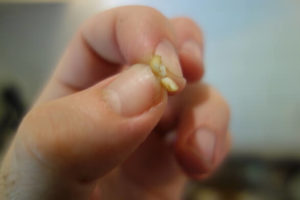 The Mushroom Guide Part 6: preparing mushroom spawn
The Mushroom Guide Part 6: preparing mushroom spawn
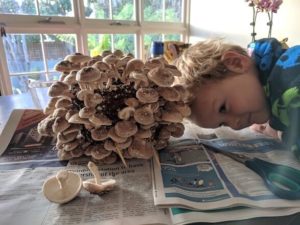 The Mushroom Guide Part 7: preparing mushroom spawn (2)
The Mushroom Guide Part 7: preparing mushroom spawn (2)
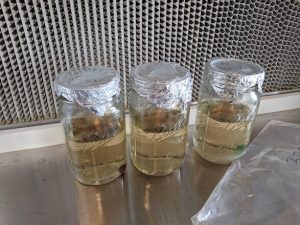 The Mushroom Guide Part 8: working with liquid mushroom cultures
The Mushroom Guide Part 8: working with liquid mushroom cultures
 Low-impact food & drink
Low-impact food & drink
 Mushroom cultivation
Mushroom cultivation
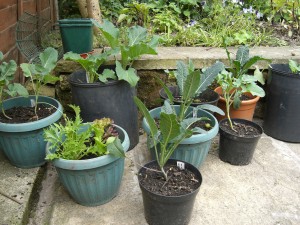 Urban / small space gardening
Urban / small space gardening


